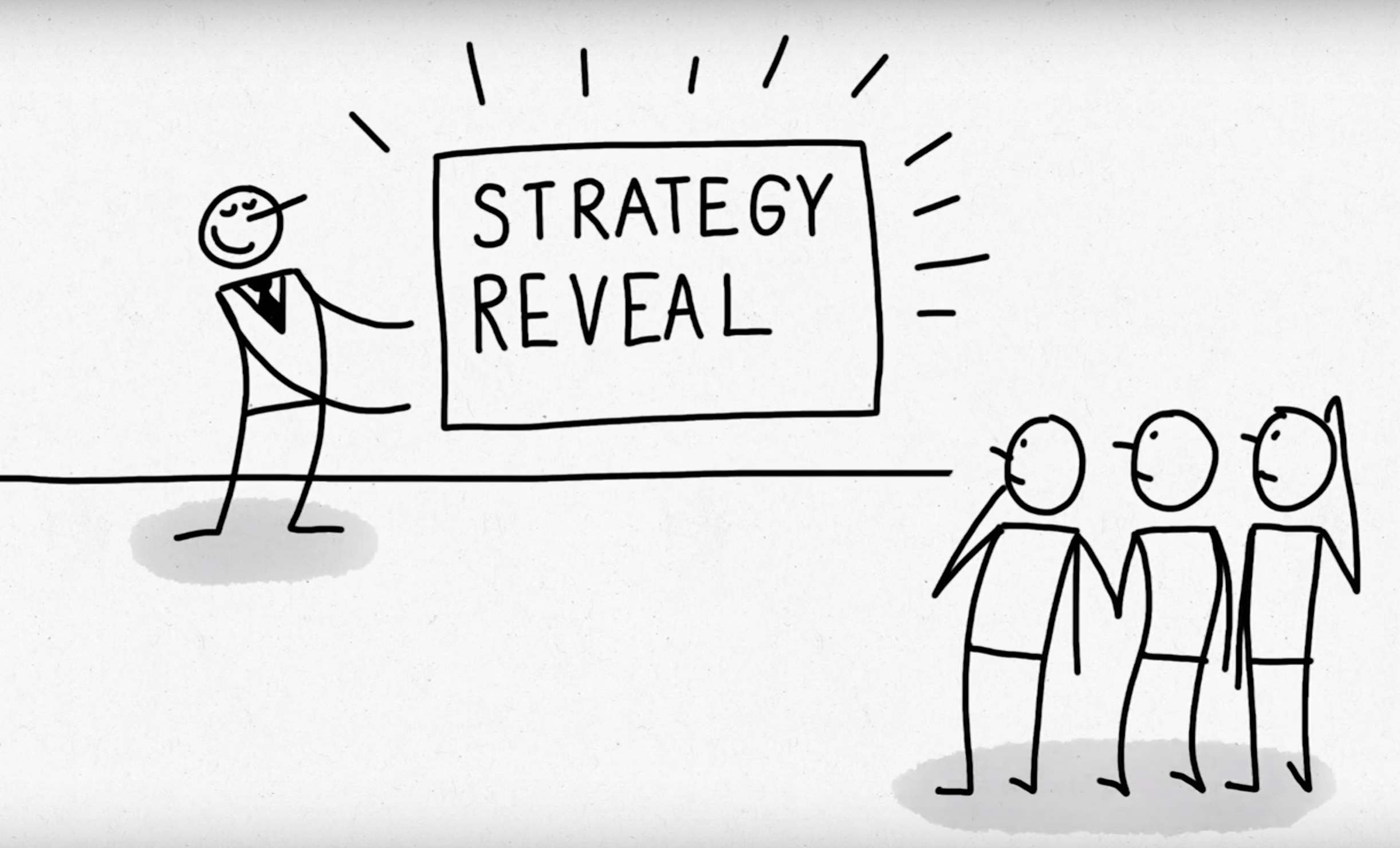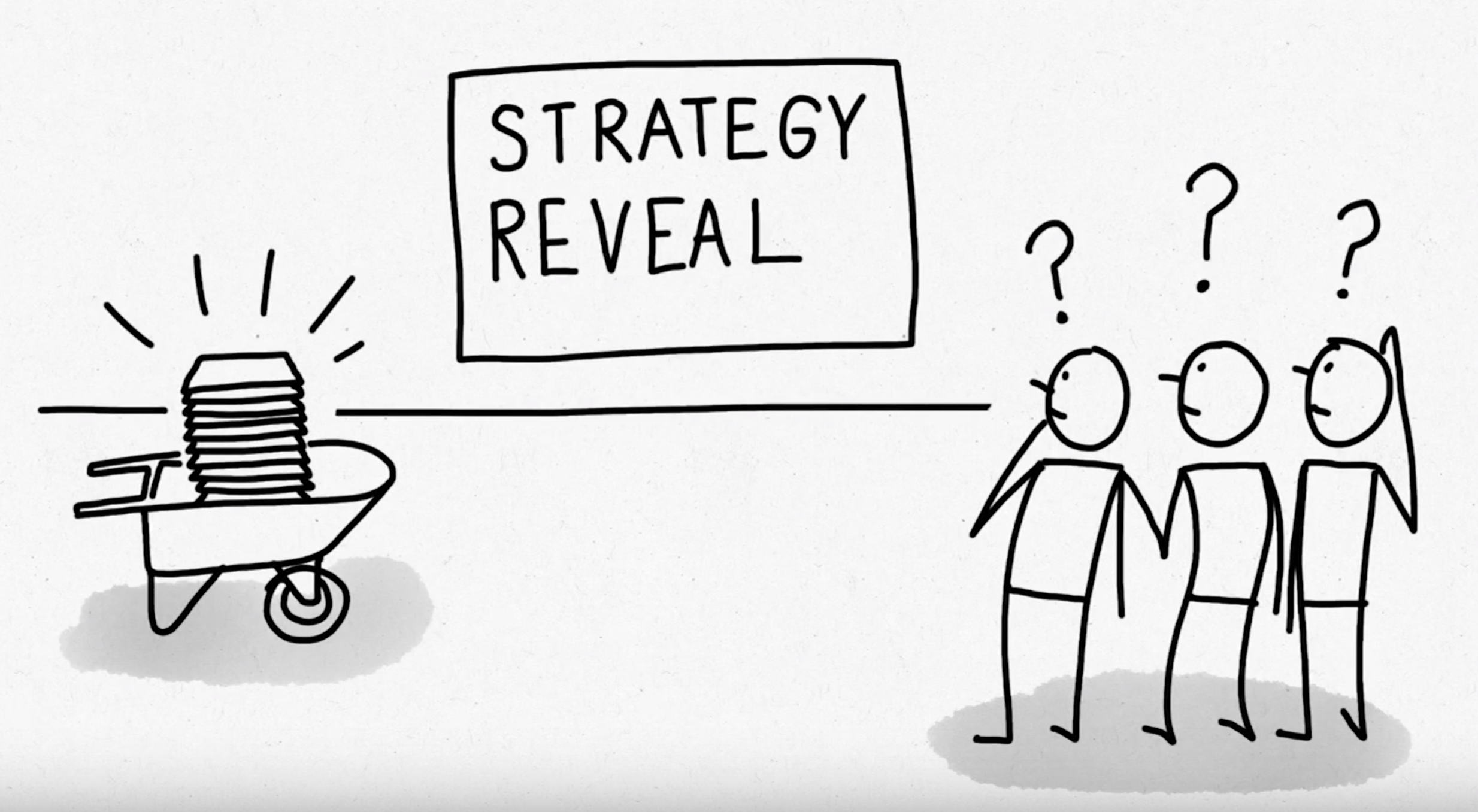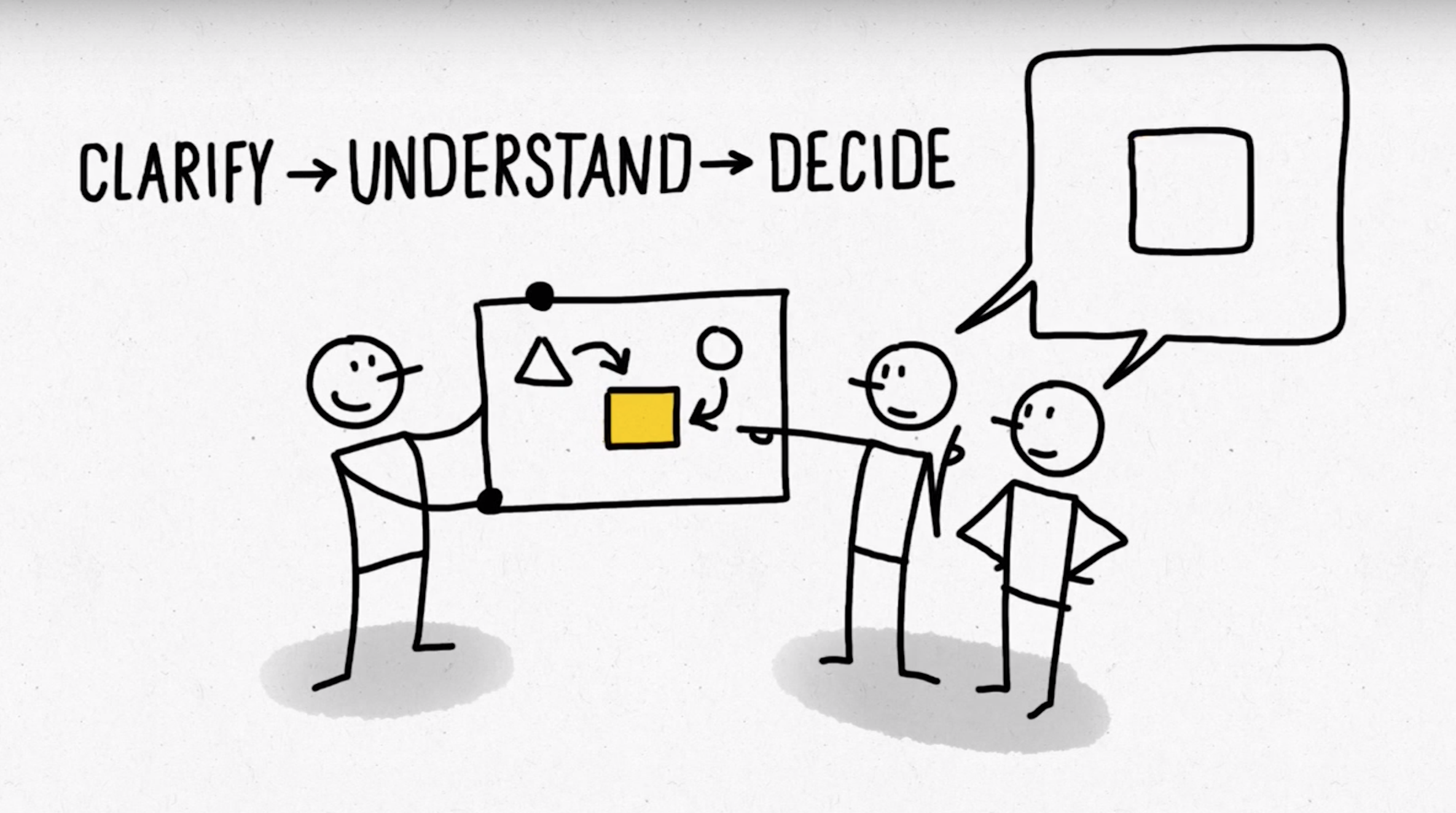Here’s how the game is played:
Strategy Development
Last year’s unwieldy slide deck gets updated and is then passed from person to person. With every pass, the slide deck becomes more confusing, contorted and convoluted. Obscure, technical slides get added. The appendix of useless information at the end becomes a bloated mess. The slide deck is a kind of hot potato, that passes from person to person and team to team until eventually the strategy is set and budgets allotted.
 Launch
Launch
The CEO stands up and gives a 20-minute talk, which is mostly flash. The thousand-slide deck has now been compressed to a few slick slides, catchy phrases, and some vague words that sound great. However, most people are puzzled. It’s not at all clear what has changed or what needs to be different. Nobody is sure how people are supposed to translate the new strategic ideas into daily work routines and tasks.
Implementation
The slide deck gets passed around and managers at all levels try to pick up the buzzwords and fancy language so they can throw the right words or phrases into their PowerPoint slides. The new words are pasted onto the old slides and the old initiatives because the new words get budgets and the old words don’t. Managers then present the slides to their respective teams.
 After the slides, typically new incentives are designed, only to be gamed immediately. For example, I was working with a large bank which was pursuing a customer-focused strategy. The bank’s goal was to create a wonderful, easy, fast customer experience. One of the success metrics was customer complaint calls. This makes sense, right? Fewer customer complaints probably correlates with a better experience. But employees reduced complaints by taking the bank’s phone number off of the website. Complaints went down, sure, but so did customer satisfaction. Perverse incentives that actually undermine the company’s own goals are more common than most people would imagine.
After the slides, typically new incentives are designed, only to be gamed immediately. For example, I was working with a large bank which was pursuing a customer-focused strategy. The bank’s goal was to create a wonderful, easy, fast customer experience. One of the success metrics was customer complaint calls. This makes sense, right? Fewer customer complaints probably correlates with a better experience. But employees reduced complaints by taking the bank’s phone number off of the website. Complaints went down, sure, but so did customer satisfaction. Perverse incentives that actually undermine the company’s own goals are more common than most people would imagine.
It’s Time For a New Game
There is a better way. There is a way that involves people at every level in thinking through the strategy and its impacts. There is a process that gets senior executives on the same page, helps them think through implementation, and simultaneously creates compelling visual maps and stories that clearly explain the strategy so it makes sense to everyone in the organization.
This approach is called visual thinking. Visual thinking allows people of all types, big-picture-thinkers, detail people, process people, technical and creative types to work together creatively and collaboratively on complex plans and strategies. Visual thinking replaces Powerpoint ping-pong with rich, meaningful dialogue about the issues that matter. Visual thinking allows leaders to capture, organize, and synthesize data and ideas in real time so they can think together.
Visual thinking is much faster and more energizing than PowerPoint ping-pong. It sparks more creativity, reduces the time involved from months to weeks, and gets better results.

If your strategy development and implementation process is feeling old and creaky; if you are tackling complex problems that don’t have easy answers; if you are tired of the same old, same old, and looking for a fresh approach, it’s time to try visual thinking.
Learn how a beloved financial institution harnessed the power of visual thinking to operationalize their customer strategy.
And if you’re ready to transform the way you work and start your organization on the path to thinking visually, contact us to learn about hosting a visual thinking workshop for you and your team. Or, if you simply want some easy-to-use tools to get started, download our Visual Thinking Sketch Notes eBook.
